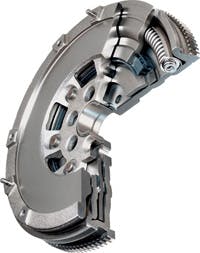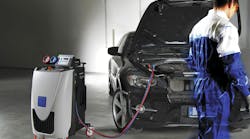Over 120 million vehicles have been installed with a Dual Mass Flywheel (DMF) as original equipment since its launch in 1985. Because modern engines continue to get smaller, lighter and more powerful, DMFs are very much here to stay.
A dual mass flywheel is a rotating mechanical device that is used to provide rotational energy in clutch systems where the energy source is not continuous. This is the same way a conventional flywheel acts, but with the additional damping of any violent variations of torque or revolutions that could cause unwanted vibration.
The dual mass flywheel was developed to address the escalation of torque and power, especially at low engine revolutions. The growing concern for the environment and the adoption of more stringent regulations have marked the development of new engines. Gone are the days of large 6 and 8 cylinder engines that had enough mass to absorb much of the vibration that was present. Technology has evolved to the point that many small engines produce more horsepower and torque than the large engines of the 1970’s and 80’s. These new engines are more efficient, having lower numbers of cylinders (3 or 2), allowing them to deliver more torque and power at low revolutions. The one negative to smaller more powerful engines is the increase in the level of vibration and noise created that a traditional clutch disc is unable to absorb. This is where the dual mass flywheel plays a key role…picking up the slack by eliminating this noise and vibration.
The name “dual mass” says it best: the mass of a conventional flywheel has been divided into two parts.
- One part belongs to the mass moment of inertia created by the engine.
- The other part increases the mass moment of inertia generated by the transmission.
- The two decoupled masses work together and are connected via a spring/damping system.
DMF Advantages:
- First-class driving comfort
- Absorbs noise and vibration
- Reduces fuel consumption due to lower engine speeds
- Decreases transmission synchronizer wear
- Protects the drivetrain against overstraining


